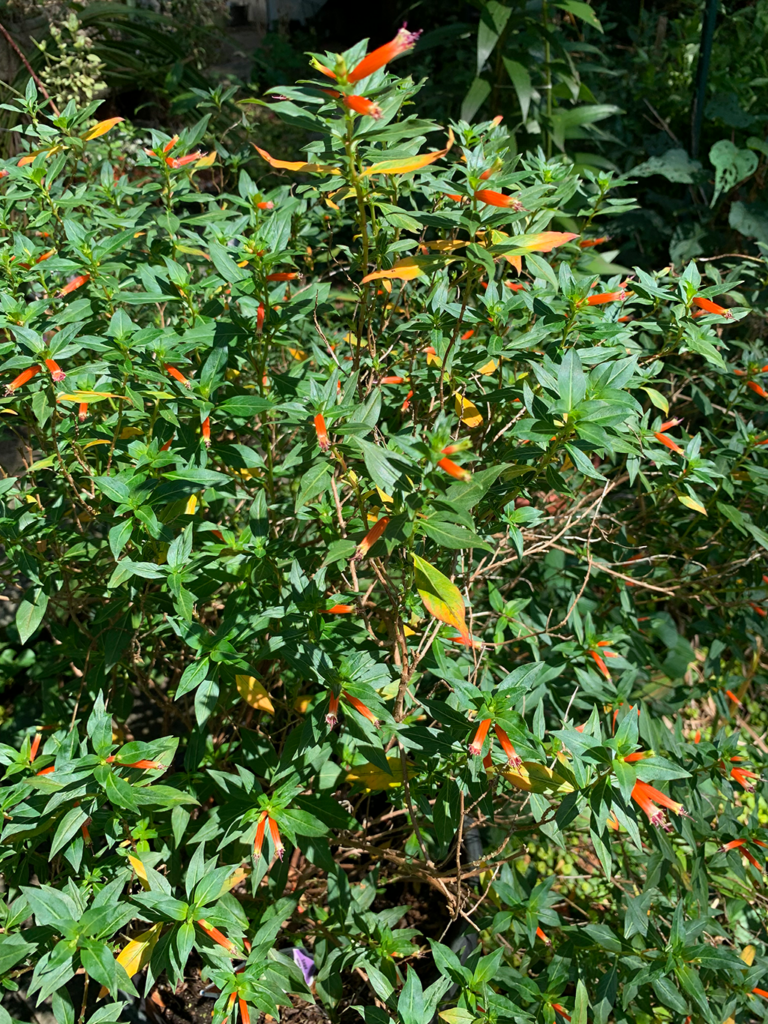Heralding the Hummingbirds

By Maria Price
Have you ever heard a vibrating buzz that passes within inches of you and instead of being attacked by a giant bee, you are relieved to discover that it was a close encounter with a hummingbird?
Hummingbirds are among the most intriguing birds. Sometimes when I’ve been between a favorite flower and a hummingbird, they’ll pause in midair, hovering like a helicopter, waiting for me to move out of the way.
I used to feed hummingbirds sugar water in those feeders with the red plastic flowers— but I wasn’t very good at keeping them clean and filled. I decided that providing natural nectar from flowering plants would probably keep the birds healthier. Especially when they have a long winter migration to Central America ahead of them. Most of them have to fly across the Gulf of Mexico to get there.
The ruby-throated hummingbird is our native hummer on the East Coast. Many years ago, when I had a large greenhouse, hummingbirds would occasionally get trapped inside it. My daughter would catch them in a butterfly net, gently holding them in her hand before releasing them outside. I would marvel at the size of the half-inch long emerald green feathers that were occasionally left behind. Hummingbirds have been timed at speeds up to 60 mph.
The ruby-throated hummingbird laps flower nectar with a brushy tongue. They also consume tiny insects and spiders. Many plants yield nectar for hummers. They seem to prefer tubular flowers that are red, orange, and even blue.
One of their favorites in my garden is an annual cuphea hybrid by Proven Winners known as Vermillionaire. Even though it’s an annual, I keep it in a large 14-inch pot that I bring indoors for the winter. In a sunny window, it continues to bear flowers until midwinter. I put it back outside in late spring and fertilize it for the visiting hummers.
Our native cardinal flower (Lobelia cardinalis) also brings the hummers in with its brilliant red flowers. I let it reseed itself, as establishing it can be difficult. It likes moist sun but also grows in dry sunny spots.
A few other plants for attracting hummingbirds are the perennial Black and Blue Salvia, raspberry bush flowers, and Anise hyssop (Agastache foeniculum). The late native jewelweed (Impatiens capensis) contains high amounts of sugar in its nectar—sustenance for their fall migration.
